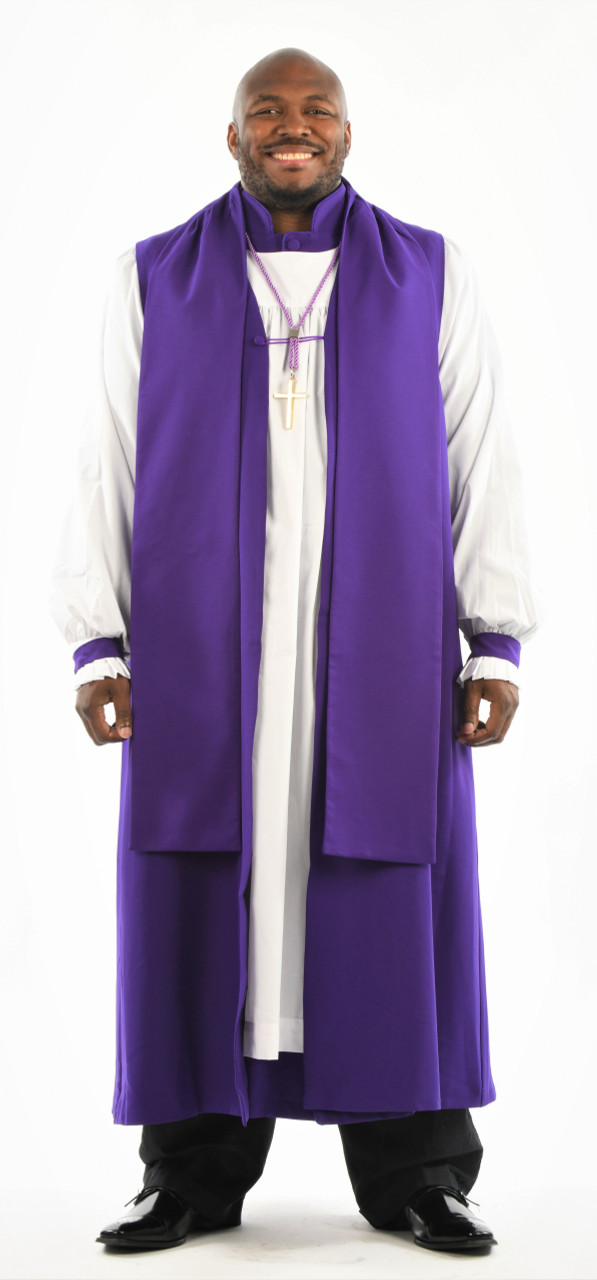
Custom Tailoring for Bishops
Custom tailoring is often associated with high-end fashion and personalized garments. However, it might come as a surprise to many that even the attire of bishops can be custom-tailored to perfection.
Here is the special process of custom tailoring bishop robes. Let’s look at the significance of the right fit, and the unique style preferences of bishops.
Tailoring Bishop Robes
Custom tailoring is an intricate process, regardless of the attire being created. When it comes to bishop attire, the same level of precision is applied to ensure the perfect fit and style.
Measuring and Design
The tailoring begins with meticulous measurements. Professional tailors measure every detail, from the bishop’s height and girth to the length of their arms and shoulders. These measurements are essential for creating a robe that not only fits comfortably but also drapes elegantly.
For clergy who prefer to purchase ready-made bishop attire sets, they are often given a range of sizes. They can then have it tailored to fit them perfectly, and ensure the measurements and design of their preference are followed precisely.
Material Selection
The choice of fabric is a critical decision in the custom tailoring process. Bishops often prefer high-quality materials that are not only comfortable but also durable. Silks, brocades, and other fine materials are common choices. The selection of fabric can also impact the robe’s style and appearance.
Style Customization
One of the most exciting aspects of custom tailoring bishop robes is the opportunity for style customization. Bishops can select the design of the robe, the cut of the sleeves, and even the color. The customization may reflect the bishop’s personal preferences or the traditions of their religious order.
The Significance of the Right Fit
The fit of a bishop’s robe is of utmost importance. It should be comfortable to wear for long periods during religious ceremonies and processions. A robe that fits well enhances the bishop’s comfort and confidence, allowing them to focus on their spiritual duties.
Liturgical Considerations
In addition to the physical fit, liturgical considerations come into play. The length and style of the robe should conform to the specific liturgical requirements of the bishop’s denomination. Some traditions have more elaborate robes with intricate details, while others prefer simplicity.
Enhancing Presence
A well-fitted robe also enhances the bishop’s presence during religious ceremonies. It drapes gracefully, creating a sense of dignity and authority. A perfectly tailored robe can be a powerful symbol of the bishop’s spiritual role.
Unique Style Preferences
Bishops, like individuals from all walks of life, have unique style preferences. Some may favor traditional, ornate designs, while others may opt for a more contemporary and streamlined look.
Tradition vs. Modernity
Custom tailoring allows for a balance between tradition and modernity. Bishops can choose to incorporate traditional symbols, embroidery, and colors into their robes, or they may prefer a more minimalist and modern approach. The choice is a personal one, reflecting the bishop’s vision and the traditions of their faith.
Regional Influences
Bishop attire can also be influenced by regional traditions. For example, bishops in different parts of the world may have unique style preferences that reflect the local culture and history.
Custom Tailoring Still Fits Bishops and the Clergy
Custom tailoring for bishops and the clergy is a meticulous process that combines artistry, tradition, and the personal style of the wearer. A well-fitted, custom-made bishop attire not only enhances the comfort and presence of the clergy but also serves as a symbol of their spiritual authority.
These special robes reflect the rich tapestry of tradition and individuality that defines the role of a bishop in the Church. What your clergy and bishop wear is a testament to the intersection of faith and fashion, where each robe tells a unique story of your church.



